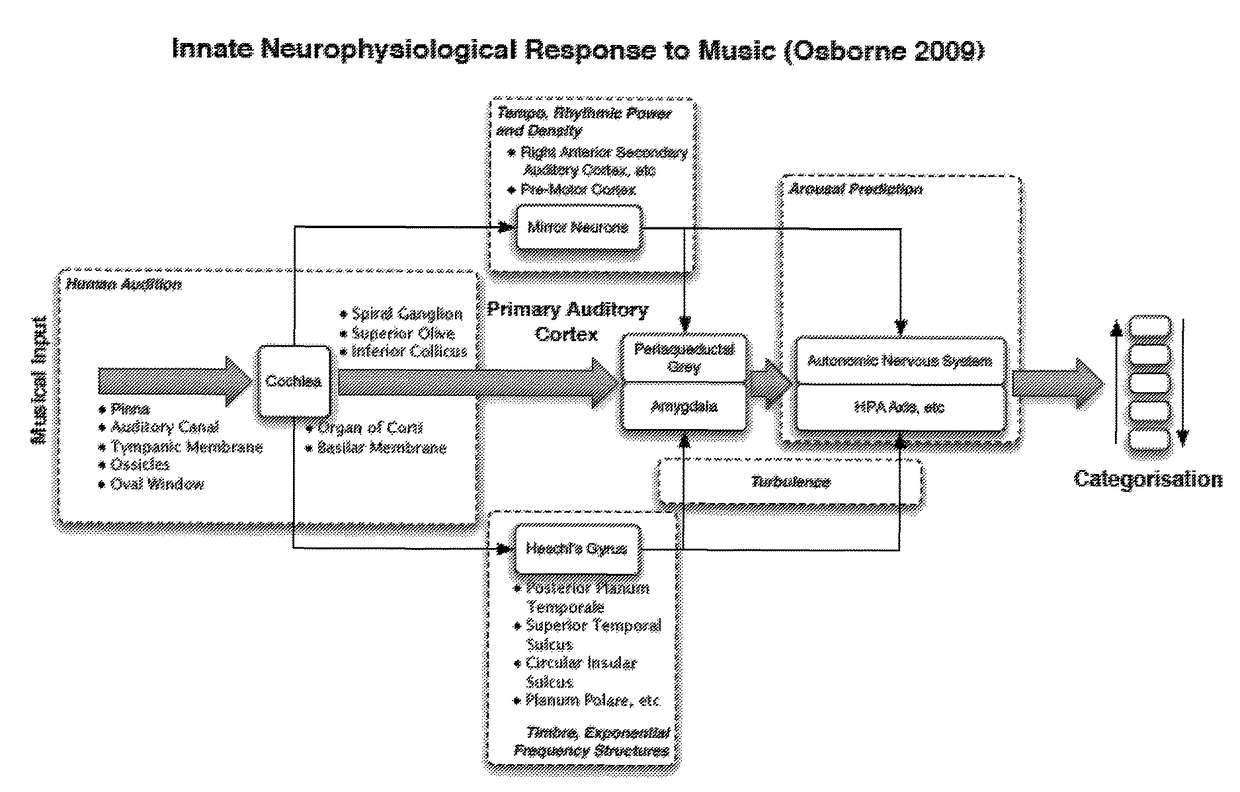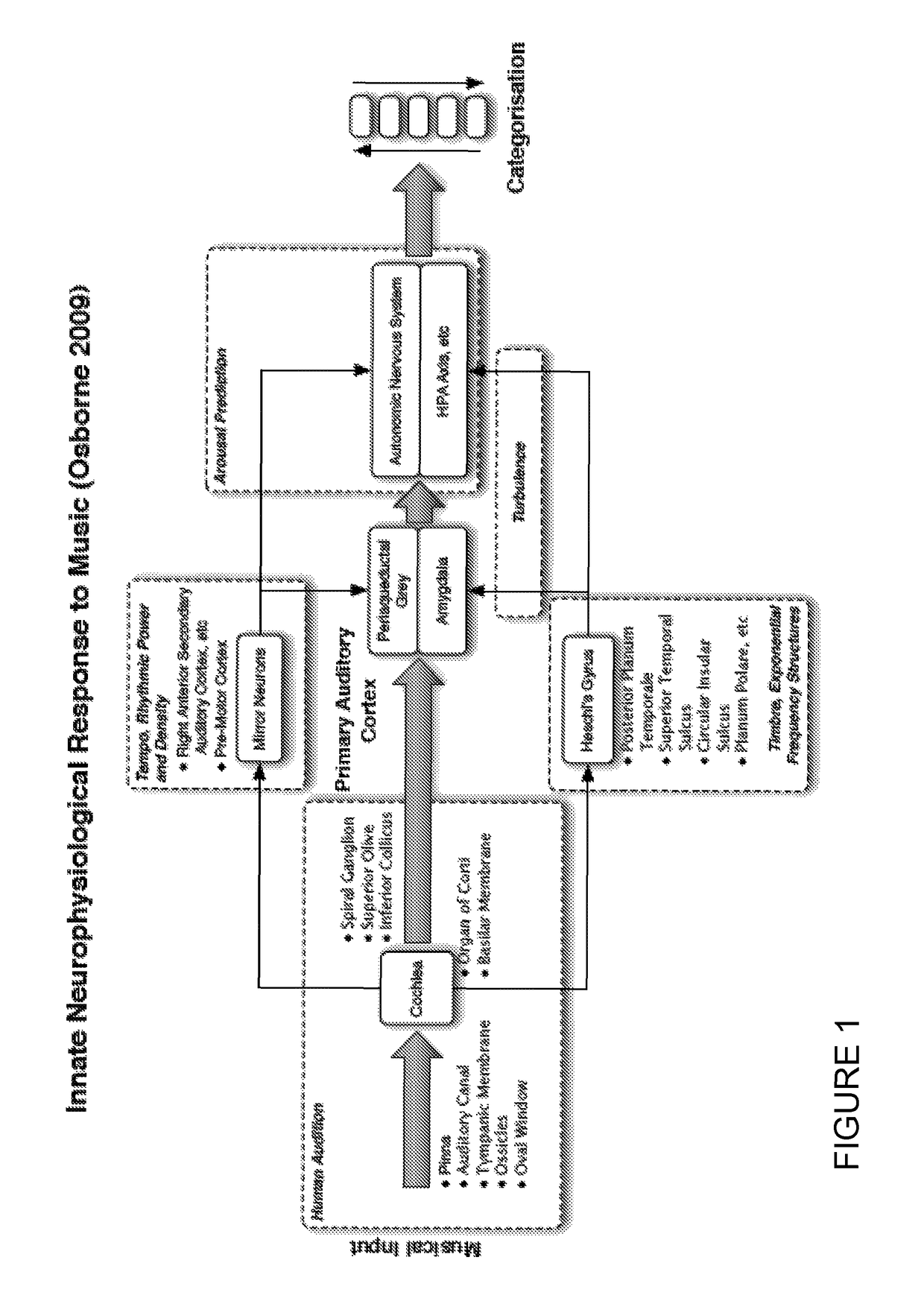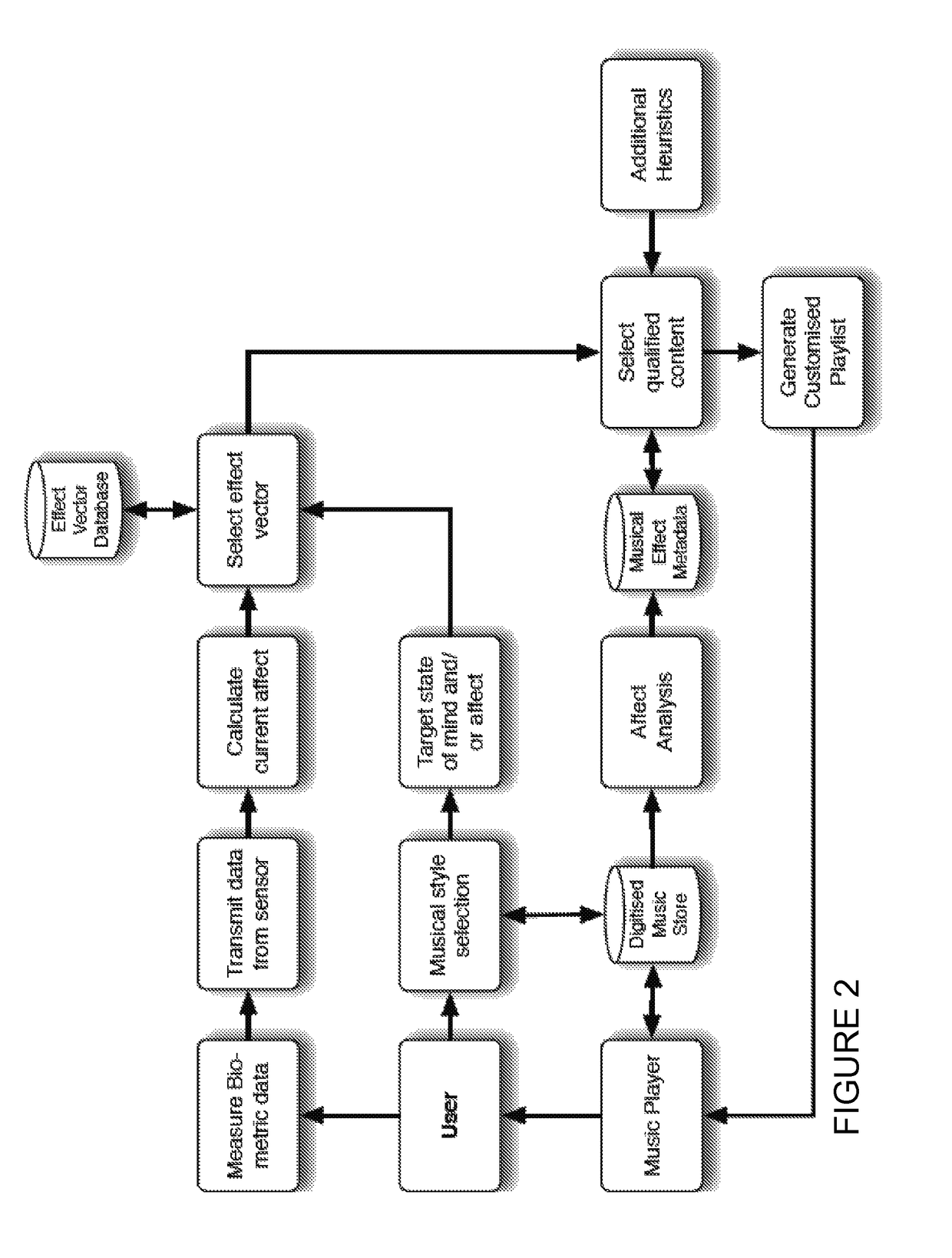Method and system for analysing sound
a sound analysis and sound technology, applied in the field of sound analysis methods and systems, can solve the problems of inability to predict the effect of music in neuro-physiological terms, significant divergence and loss of entrainment effect, and inability to reliably determine the effect of music, etc., to accelerate the desired effect and enhance the user experien
- Summary
- Abstract
- Description
- Claims
- Application Information
AI Technical Summary
Benefits of technology
Problems solved by technology
Method used
Image
Examples
Embodiment Construction
[0067]This Detailed Description has the following sections:
A. High Level Concepts
B. The Innate Neuro-physiological Response to Music (INRM) in more detail
C. How X-System is used
D. The Sensor or Sensors
E. Musical Selection Algorithms
F. The Music Player
G. Diagnostic and streaming software
H. Manual categorisation
I. Manual categorisation vectors
J. Social Networks
K. Opportunities for Expansion / Enhancement
L. Benefits of X-System
A. High Level Concepts
[0068]There is scientific evidence that music entrains and shapes arousal, state of mind and affect through direct neuro-physiological engagement; this invention concerns the discovery and general method of determination of the Innate Neuro-physiological Response to Music, and includes a novel method of harnessing this phenomenon. As noted above, this invention is implemented in a product called X-System. X-System harnesses the potential of music to effect neuro-physiological changes in listeners, in particular in relation to arousal and count...
PUM
 Login to View More
Login to View More Abstract
Description
Claims
Application Information
 Login to View More
Login to View More - R&D
- Intellectual Property
- Life Sciences
- Materials
- Tech Scout
- Unparalleled Data Quality
- Higher Quality Content
- 60% Fewer Hallucinations
Browse by: Latest US Patents, China's latest patents, Technical Efficacy Thesaurus, Application Domain, Technology Topic, Popular Technical Reports.
© 2025 PatSnap. All rights reserved.Legal|Privacy policy|Modern Slavery Act Transparency Statement|Sitemap|About US| Contact US: help@patsnap.com



